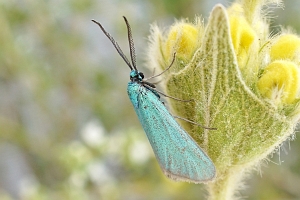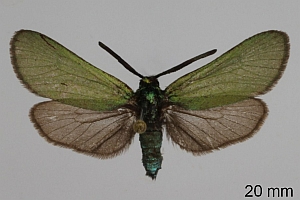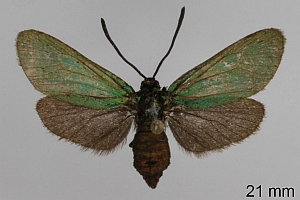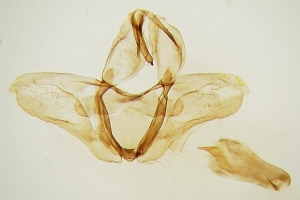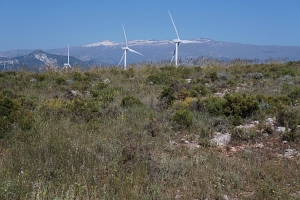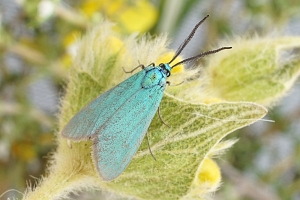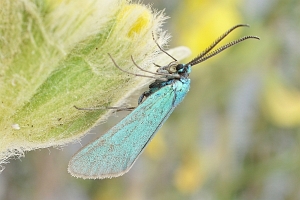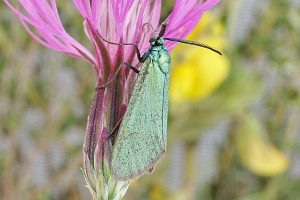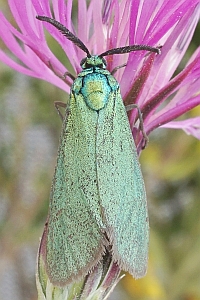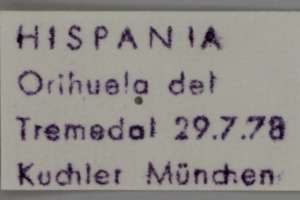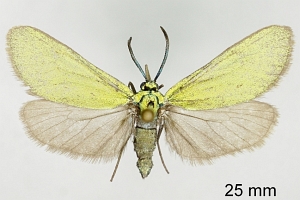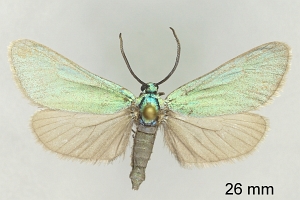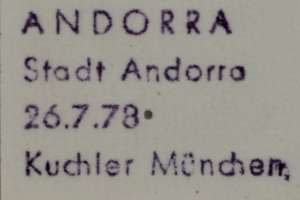

 +4Kontinente:EU
+4Kontinente:EU1. Lebendfotos
1.1. Falter
2. Diagnose
2.1. Männchen
2.2. Weibchen
2.3. Genitalien
Hinweis: Weitere hervorragende Genitalabbildungen jeweils mehrerer Präparate beiderlei Geschlechter finden sich im "Bildatlas der Rot- und Grünwidderchen des Alpenraums" von Guenin (2023), der mittlerweile auch zum freien [Download auf e-periodica.ch] zur Verfügung steht.
2.3.1. Männchen
3. Biologie
3.1. Habitat
3.2. Nahrung der Raupe
- [Asteraceae:] Centaurea paniculata (Rispige Flockenblume)
- [Asteraceae:] Centaurea cf. ornata
Efetov & Tarmann (2020) beschreiben die Präimaginalstadien der Art und können dabei auch über Freiland-Eiablagebeobachtungen berichten. Zunächst: "The first field studies on J. hispanica go back to the year 1978 when a colony was discovered by G. M. T. in the south-western Alps on Mont Ventoux in the Department Vaucluse in southern France. Females were observed ovipositing on Centaurea paniculata L. (Asteraceae) (Tarmann, 1992; Naumann et al., 1999; Efetov & Tarmann, 1999). A few larvae were reared from these eggs until L3 on Centaurea jacea L. and C. scabiosa L. in captivity, but then died." Dann aber auch: "The first oviposition was observed in nature on 24 July 1978 by G. M. T. at noon (around 12 o’clock, summer time) on the stems below and on the calyx of flowering Centaurea paniculata L. (Asteraceae) plants at Forêt de la Perache. A second oviposition was observed on 15 June 2002 by K. A. E. & G. M. T. at El Espinar, again at noon (exactly at 12 o’clock, summer time) on Centaurea cf. ornata Wild., again singly and on the calyx of the flower heads. When ovipositing the female bends its abdomen downwards and attaches the eggs singly or in a short row (the eggs not touching each other) on the surface of the plant." Es ist also davon auszugehen, dass in der Natur noch weitere Centaurea-Arten zur Eiablage genutzt werden können.
(Autor: Erwin Rennwald)
4. Weitere Informationen
4.1. Andere Kombinationen
- Procris hispanica Alberti, 1937
4.2. Faunistik
Locus typicus nach Alberti (1937: 87): Spanien, Sierra Segura, Molinoco.
4.3. Literatur
- Erstbeschreibung: Alberti, B. (1937): Beitrag zur Kennrnis der Gattung Procris nebst Beschreibung einer neuen Art. — Entomologische Zeitschrift 51: (9) 86-89 [PDF auf zobodat.at], (10) 98-100 [PDF auf zobodat.at].
- Eretov, K. A. & G. M. Tarmann (2020): On the biology, ecology and conservation of Jordanita (Gregorita) hispanica (Alberti, 1937) (Lepidoptera: Zygaenidae, Procridinae). — SHILAP Revista de lepidopterología 48 (190): 351-361. [PDF auf redalyc.org]





